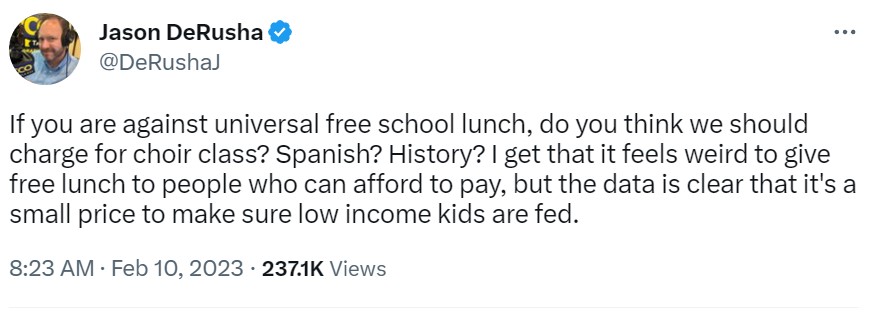After ‘free food for all’ what’s next for Minnesota? Free housing!
This week, the state legislature passed HF 5, which provides a free breakfast and lunch to all Minnesota public school children, rich and poor alike.
Extending free meals to rich schoolchildren will cost state taxpayers an estimated $214 million a year. Advocates for the program extension claim that it will eliminate the stigma suffered by poor schoolchildren who currently qualify for free meals at school.
Local radio host Jason DeRusha frames the issue this way:

He’s probably correct: with the ever-exploding state budget, $214 million/yr. now qualifies as de minimis. He’s definitely correct that that government feeding rich children two meals a day feels weird. Because it is weird.
Governor Walz is a big supporter of free-food-for-all. He wants to go one step further and create “full-service community schools.” As he describes it,
The full-service community school model can improve student outcomes and provide enriched learning opportunities as well as wrap-around supports like food, clothes, health care, and other resources for students.
The Governor is proposing to spend an additional $14.5 million (p. 138) on expanding these Dickensian schools.
But wait! They’re not done yet!
Building on these bold investments, Governor Walz and Lieutenant Governor Flanagan propose a new Department of Children, Youth, and Families (DCYF) that reimagines state government structures to elevate child, youth, and family priorities and funding needs by providing focused leadership in our executive branch and with the legislature.
Having reimagined all other bases, Democrats are now turning their attention to the next frontier: free housing. Rep. Mike Howard (DFL-Richfield), chair of the House’s Housing committee, has introduced his HF 11, which would create a new, $2 billion a year, program to subsidize rental housing in Minnesota. The bill received a hearing in his committee this week.
The most recent version of the bill leaves the dollar amount blank. The bill would require hiring 13 additional bureaucrats at the state Housing Finance Agency to administer.
As written, the bill would have state taxpayers cover the difference between 30 percent of a renter’s income (if any) and the price of the rental unit, plus utilities.
The Minnesota Reformer reports that the goal of the bill is to cover some 212,000 income-eligible households. This one program would consume 6 percent of the entire state budget.
On Tuesday, Chair Howard will present another bill (HF 1440) to his committee to spend an extra $100 million on homelessness in the state.
When it rains, it pours.